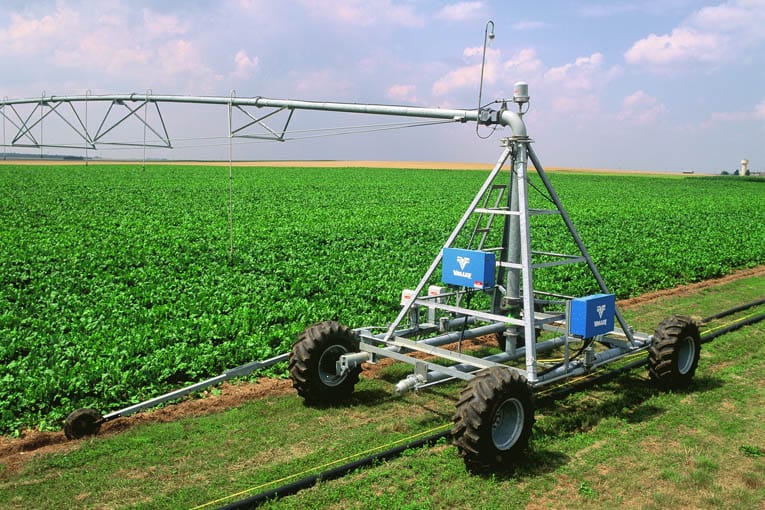Welcome rainfall

Russian agriculture functions in conditions where practically every third year is droughty and every fifth unpropitious or adverse. The fixed assets of the country's irrigation systems are 70% worn out. How can we lessen the dependence of agricultural production on the chance developments of climate, firstly drought? AgroCentre Company sees the solution to this problem in deployment of US-made Valley modern irrigation systems which we started to present in the previous issue.
The subject today will be another type of a frontal irrigation system, Valmont® Irrigation.
The Valley frontal irrigation systems first appeared in 1977 and now they irrigate more than 405,000 hectares of grains, fodders, fibrous fodder crops and sugar cane across the globe. This type of equipment is believed to be one of the most efficient tools in its class, since it increases both productivity and profit.
“Regular irrigation doubles potato yields”, says Maxim Shchukin, irrigation expert of AgroCentreZakharovo LLC. “In case of grain crops, the output more than trebles and in case of perennial herbs and maize for green forage, it grows by a factor of 3.5”.
One of the advantages of the frontal irrigation system is the option for work on elongated rectangular and small fields. Unlike circular irrigation systems, the Valley frontal models move forward and backward over the field, irrigating up to 98% of its surface. Some of them can be towed or turned around, thus doubling the irrigated area.
All the frontal systems have no fixed centre, like circular systems, which is why the system can move as a whole single unit. Based on this specific feature, frontal systems are categorised according to the water pick-up method.
Method 1: delivery of water from a canal
A canal is dug in the centre across the field. The system moves over the edge with a lowered pump which picks up water from the canal. This system is suited for small fields, since it enables towing and turning around for greater area coverage. The flexible suction hose ensures minimum investment because it is suitable practically for every workable canal in the earth.
Method 2: delivery of water through the hose
This method employs polythene hoses of different lengths with an inside diameter of up to 200 mm. They are connected to the head pressure pipe.
This is an ideal version for fields irrigated by flooding, by the trickle method or by fixed irrigation systems. This kind of versatile device can perform the functions of a standard frontal towed or rotary sprinkler.
“The Valley frontal irrigation systems use many identically simple, strong and durable subassemblies and components", Maxim Shchukin points out. “This improves their reliability and functional performance, which is vital for farming operations".
Principal advantages: